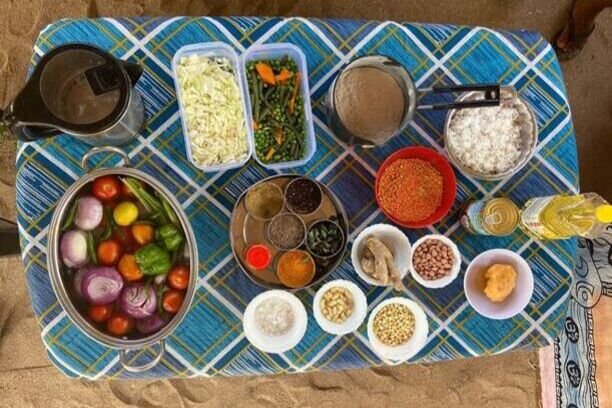
What is the Most Essential Food of a Yoga Practitioner?
Yoga is more than simply a workout; it’s a way of life that encompasses everything from thinking to nutrition. When you step away from the yoga mat, mindfulness and meditation continue. It should be applied to all elements of our life, particularly what we consume into our bodies. It the sustenance of the body’s tissues serves as a basis for the nutrition of the heart and mind, eating (food) is arguably the sole most important act for a yoga practice. It’s easy to see how committing to healthy bodily nutrition, as well as asana, Pranayama, and meditation, will help you achieve a more balanced, tranquil mind. And what does it entail to properly nourish yourself? What does it take to eat like a yogi?
Does a Diet Contribute to Yoga?
Yogic practitioners who eat well and exercise regularly, have a healthy lifestyle and living habits, get enough sleep, and wake up on time can use yoga to relieve pain. The sattvik dietary habits that must be observed are mentioned in our ancient Puranas, spiritual, and ayurvedic literature. Food that is sour, hot, spicy, salty, dry, stale and causes a burning sensation, pain, discomfort, and numerous ailments should be avoided.
Today, we’ll delve a little more into the additional yoga foods that might help us maintain our wellness while also providing the best performance and mood for yoga.
Here are Some examples of these Food:
Nuts
Nuts are little more than a quick snack; they’re also high in beneficial fats and minerals that can help you stay healthy and radiant. Nuts, per the Harvard Women’s Health Watch, can help you enhance your heart health, lessen your risk of respiratory illness, and lower your cancer risk. They include good fats like omega-3 as well as omega-6 fatty acids, and only one ounce of nuts each day can reduce your risk of cardiovascular disease and avoid arrhythmias. Better cardiovascular health could make yoga simpler to practice, which can build and maintain overall heart health.
Beets
It may appear to be a simple root crop, but they have a lot more to offer as yoga food. This can aid you with blood circulation, eye health, physical performance, and even cholesterol levels. It include nitrates, which help open blood arteries and enable more oxygen to flow to the brain and muscles, according to the Cleveland Clinic. You can get a variety of health benefits depending on the portion of the beet you consume. Beetroots, both red and purple, are strong in betacyanins and antioxidants, while beetroot greens are high in vitamin B and may be simply sautéed or mixed in a salad.
Probiotics
A healthy gut is essential for a healthy lifestyle, and consuming probiotics is one of the most effective ways to achieve this. Probiotics, according to Brightcore, can strengthen your overall immunity and improve your digestive health, making you healthier and tougher. Probiotics are found in a wide variety of foods, despite the fact that the phrase itself can be frightening. Fermented foods are an excellent source of beneficial microorganisms and are now more widely available than ever. Including yoghurt, kimchi, and even kombucha in your regular diet would be enough to keep your gut bacteria at a healthy level, and it can even make you feel quicker and more agile.
Green Leafy vegetables
Greens should constantly be consumed, especially when practicing yoga. Although the health benefits of green leafy vegetables are very well known, they are nonetheless worth examining. Green leafy vegetables are also high in macro nutrients like complex carbs and fibre, both of which are important for active people. They’re also low calorie, so you can eat a whole plate of salad without feeling guilty. Green leafy vegetables can surely be the foundation of any fantastic diet if you need a basic item to create your healthy diet around.
A pure, well-balanced, ideally yogic diet increases strength while also reducing aggressiveness and maintaining cool. Following your understanding of what sattvic food to eat or what not to consume, the next stage is to determine how much food you require. Half of the stomach should be loaded with food, half of the remaining fourth with water, and the remaining fourth should be left vacant for air circulation. It is not advisable to overfeed the stomach. Excessive eating interferes with yoga practice.




